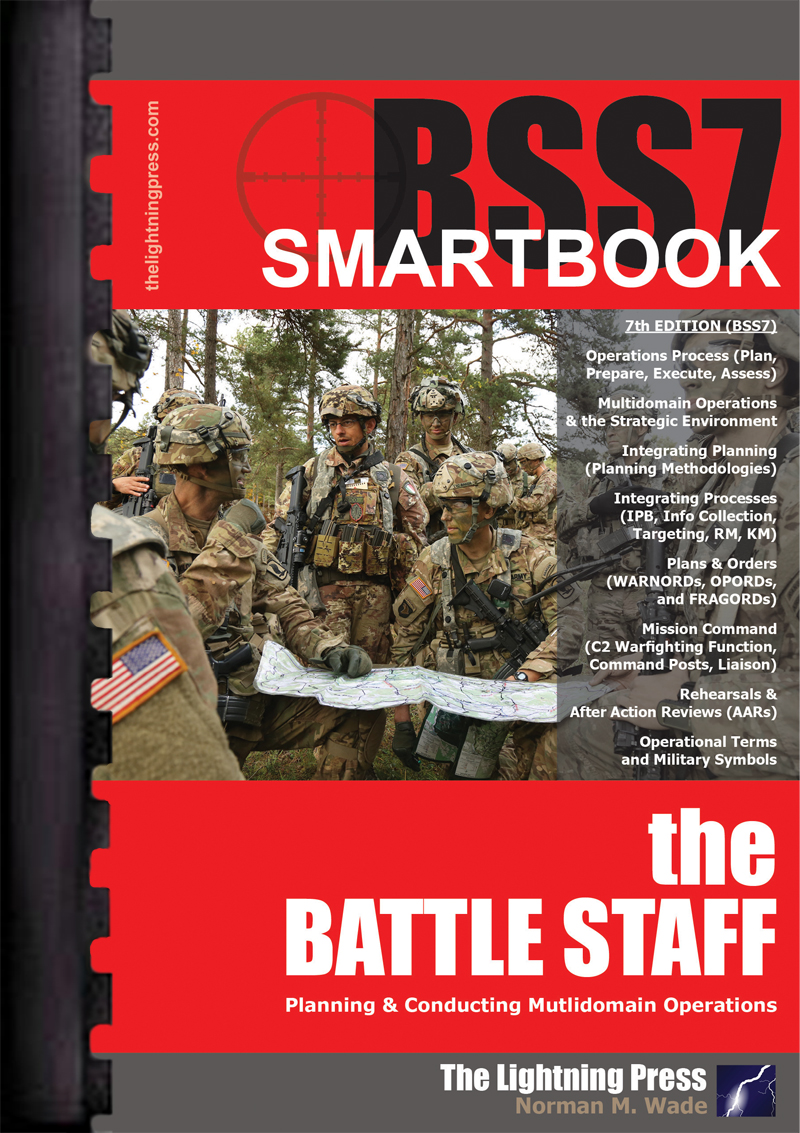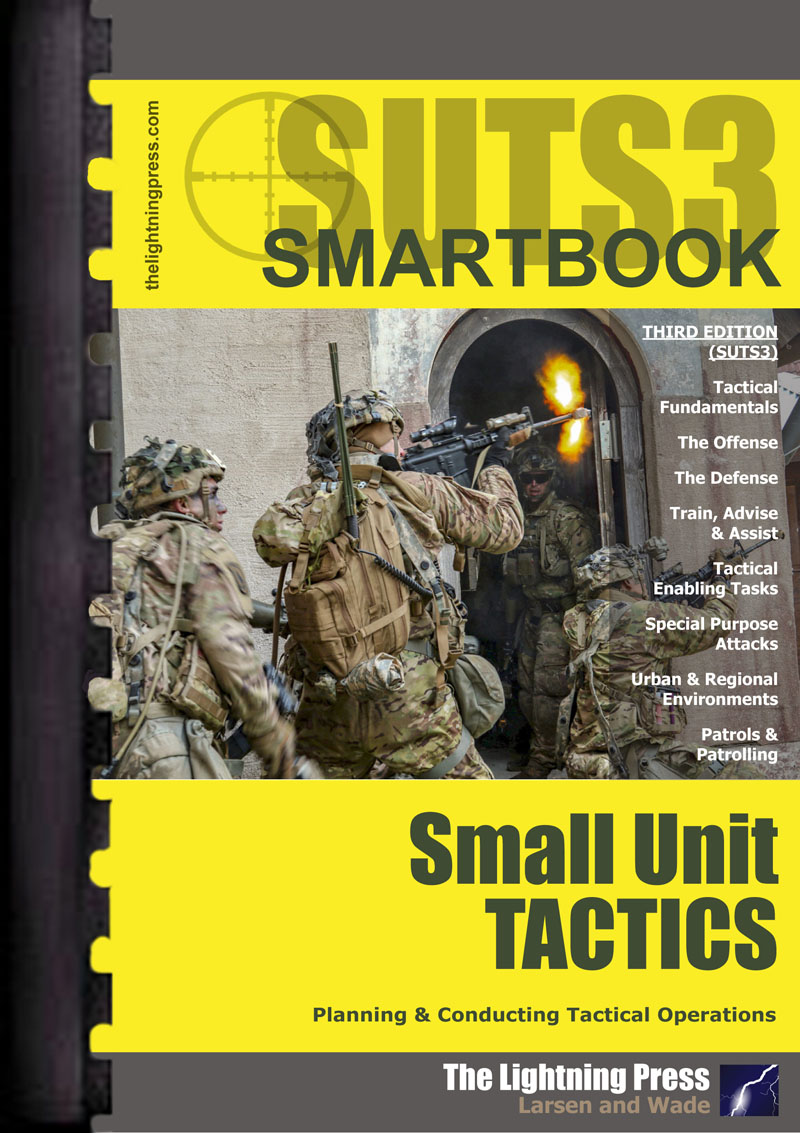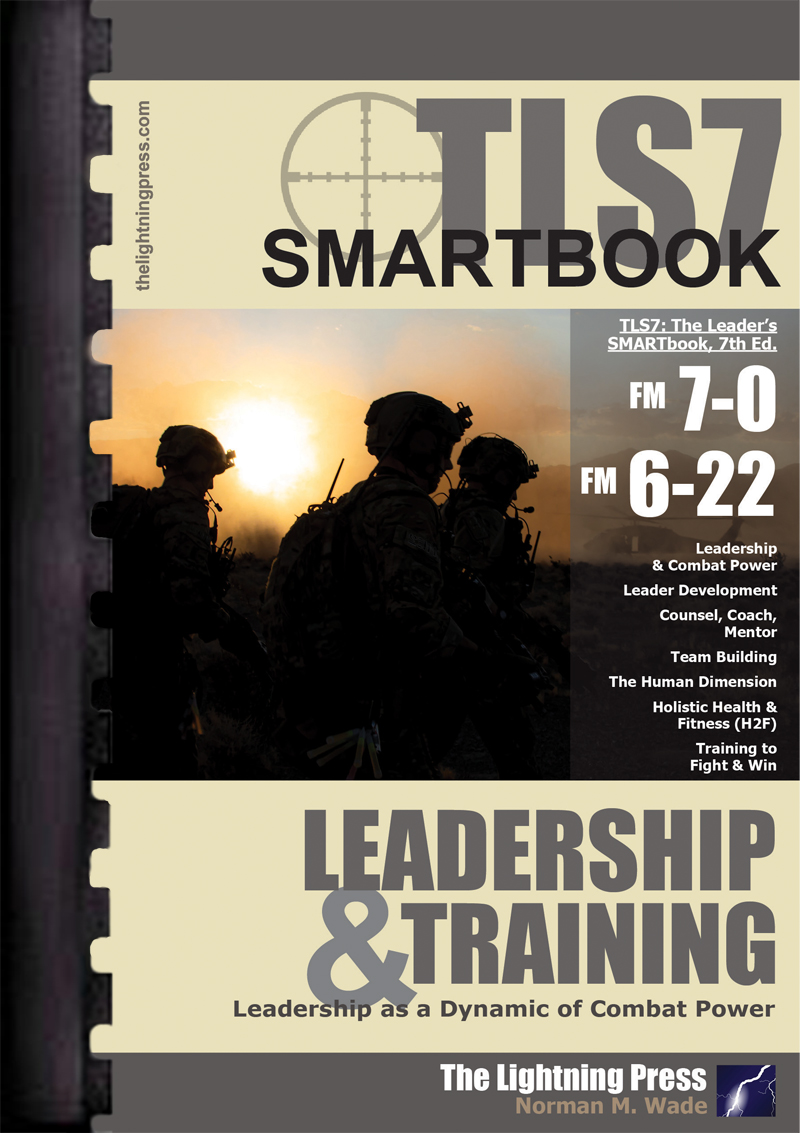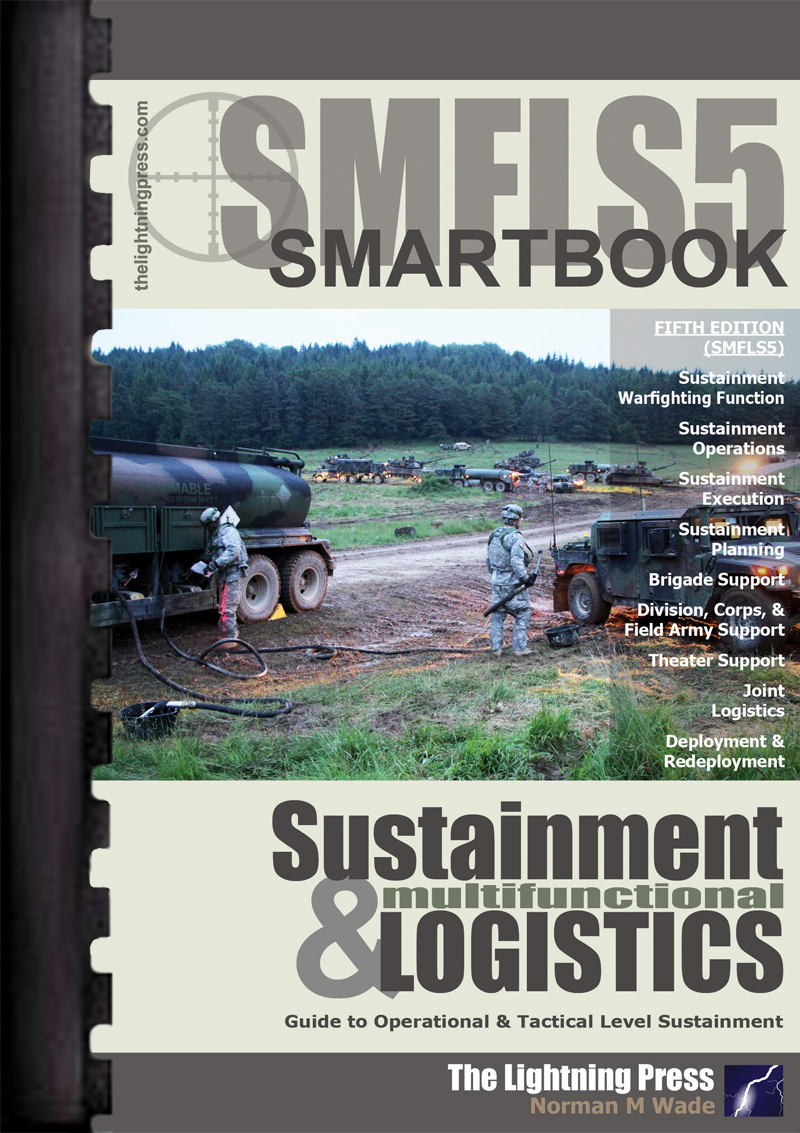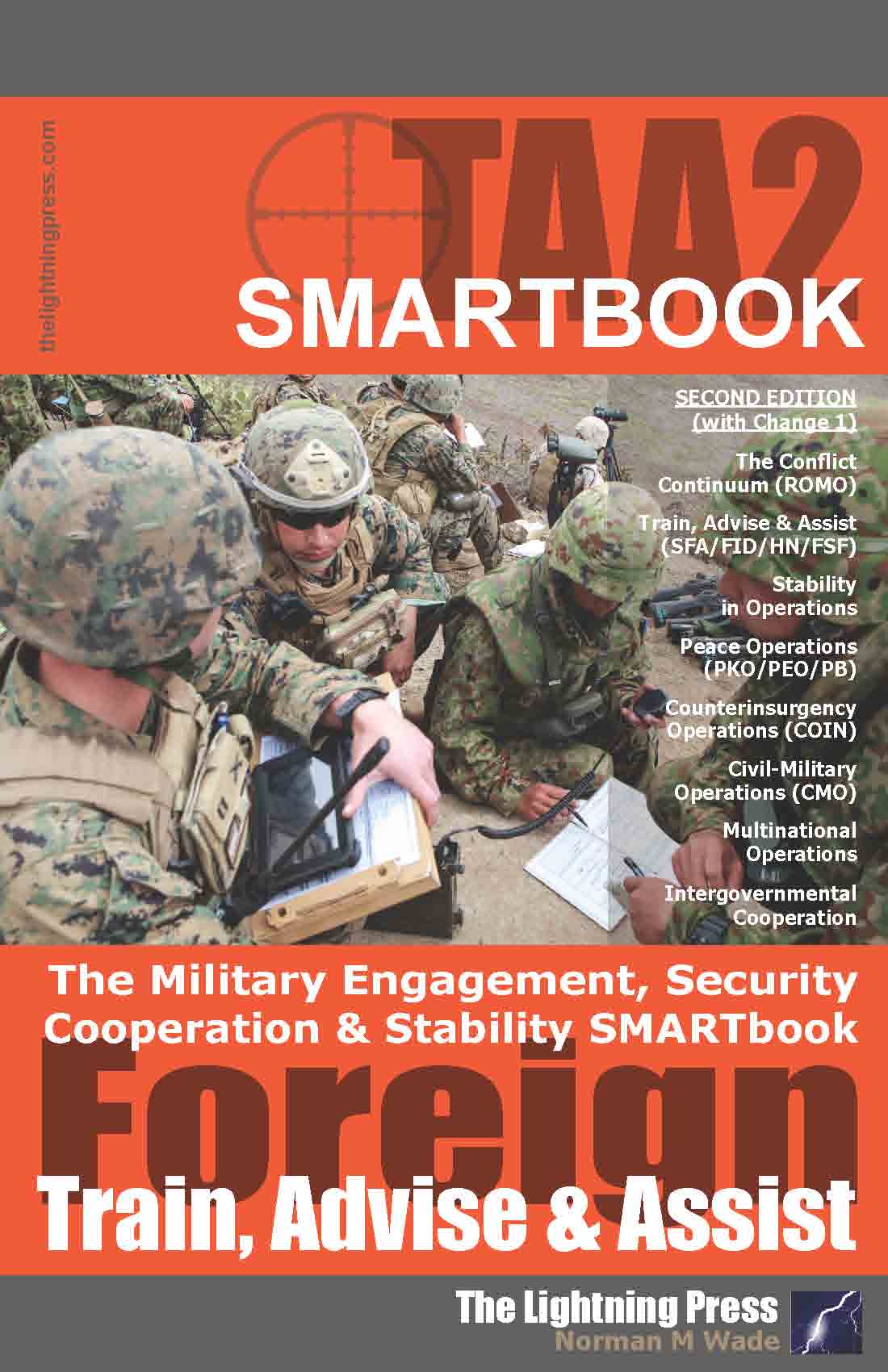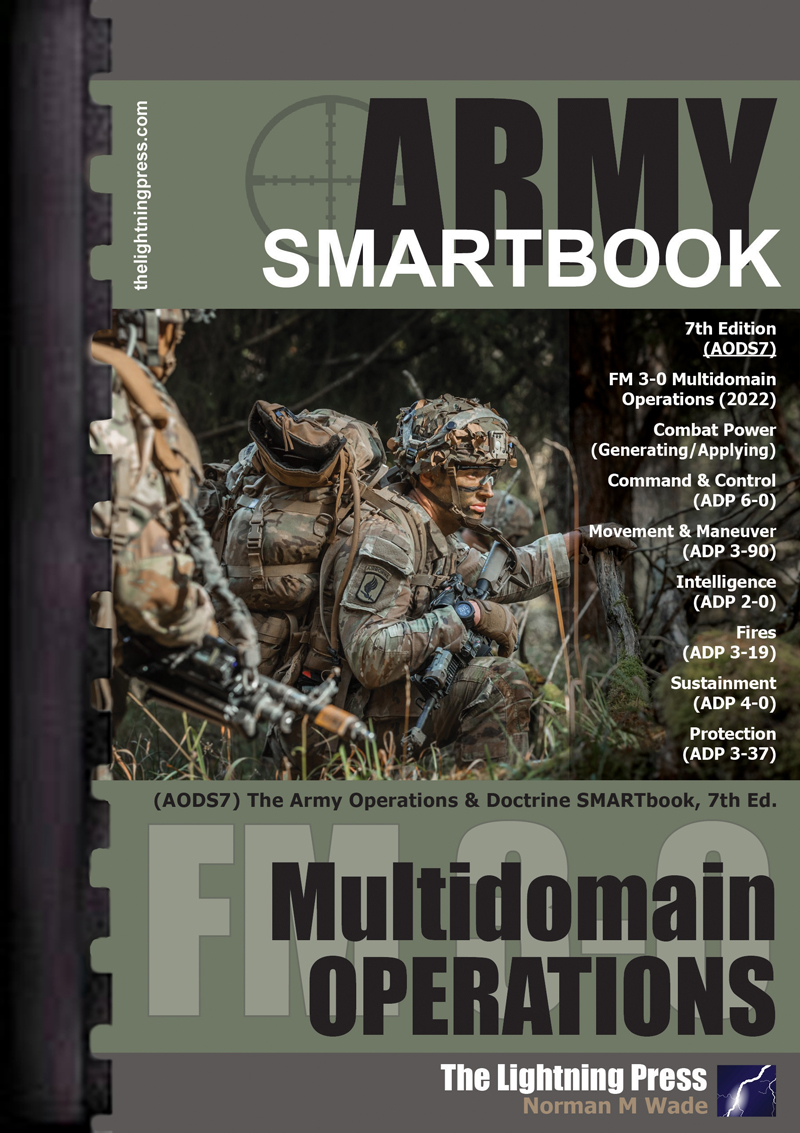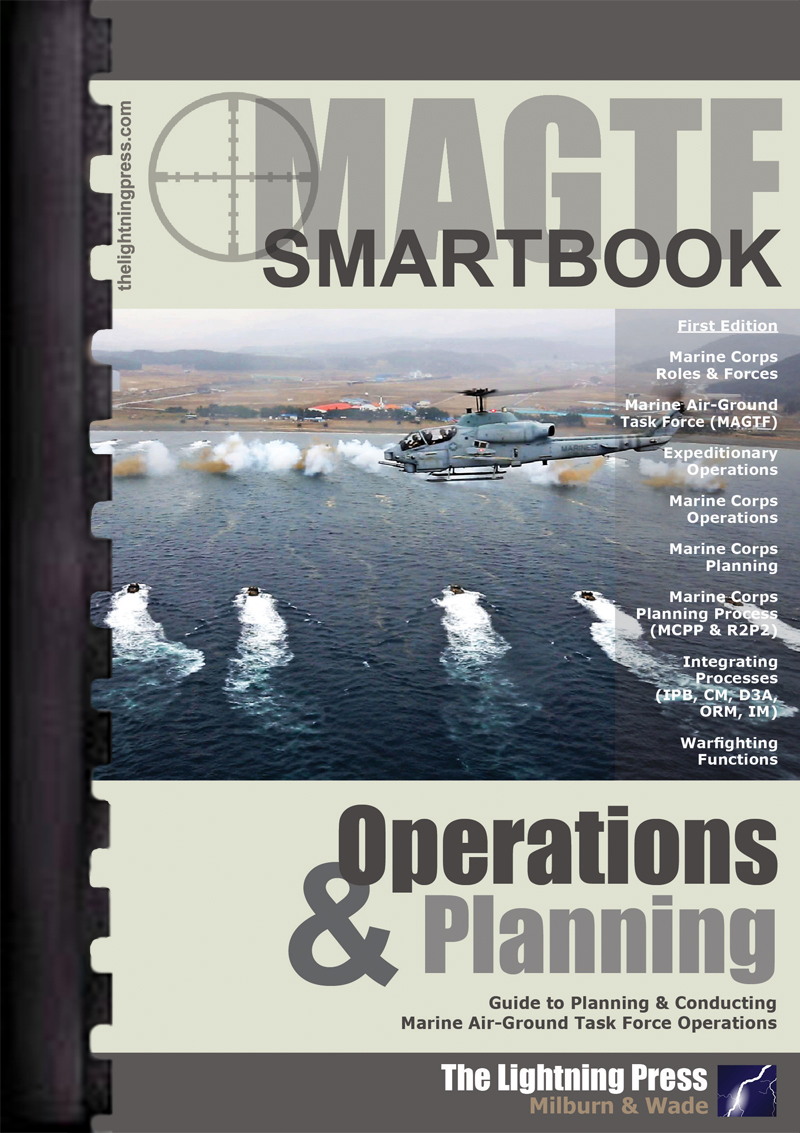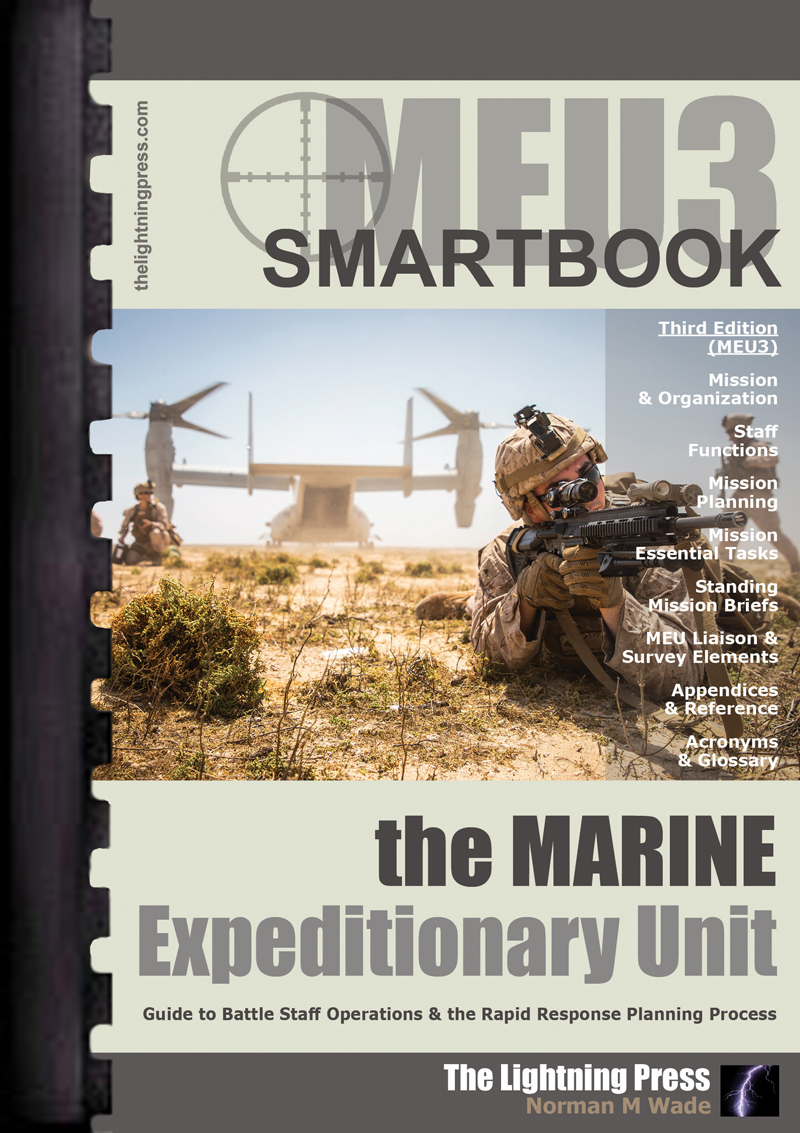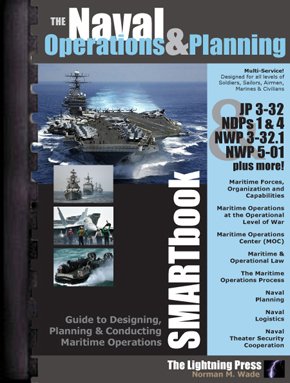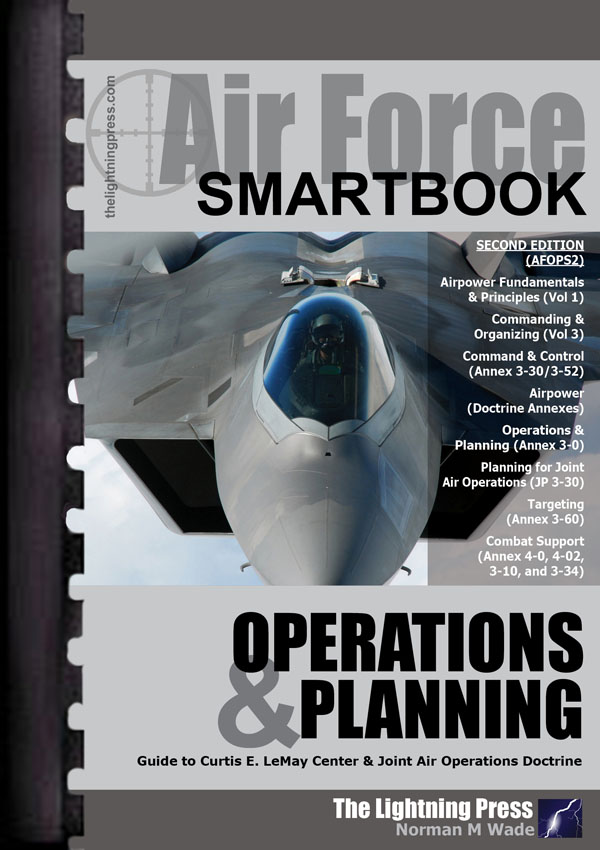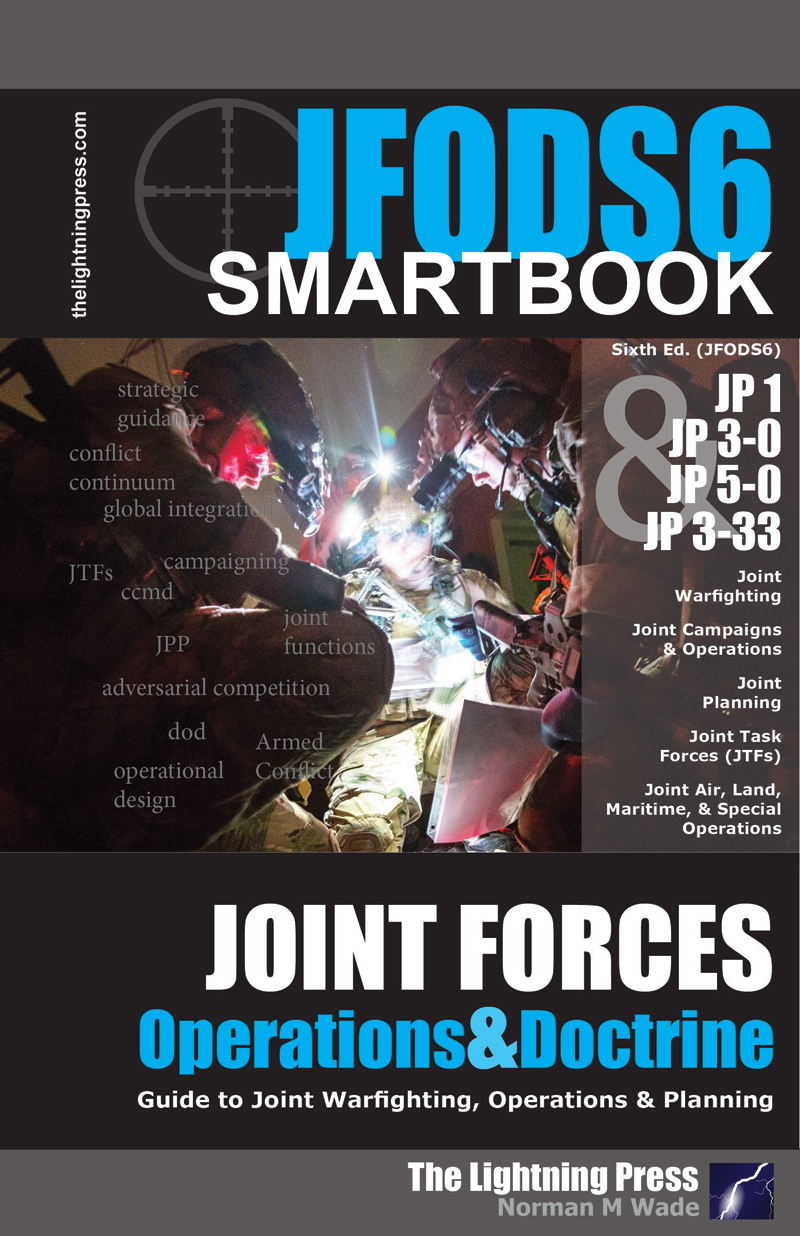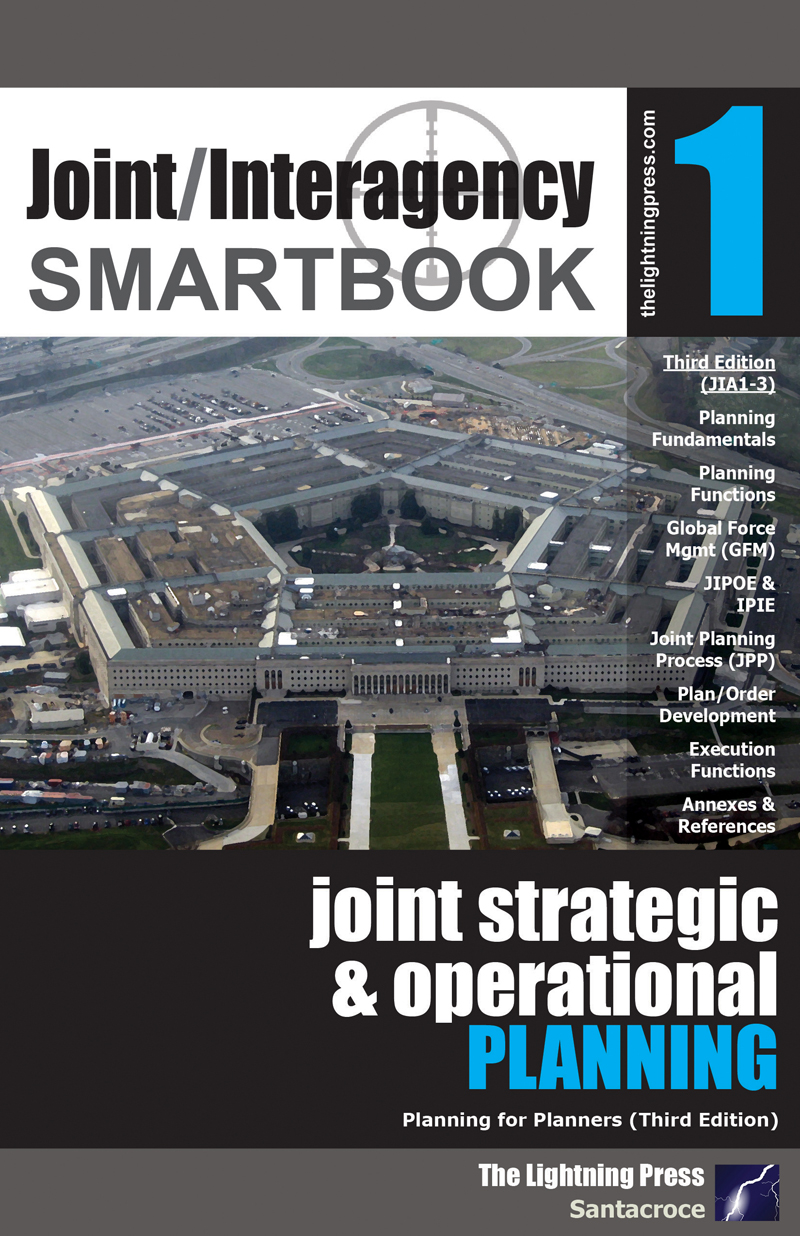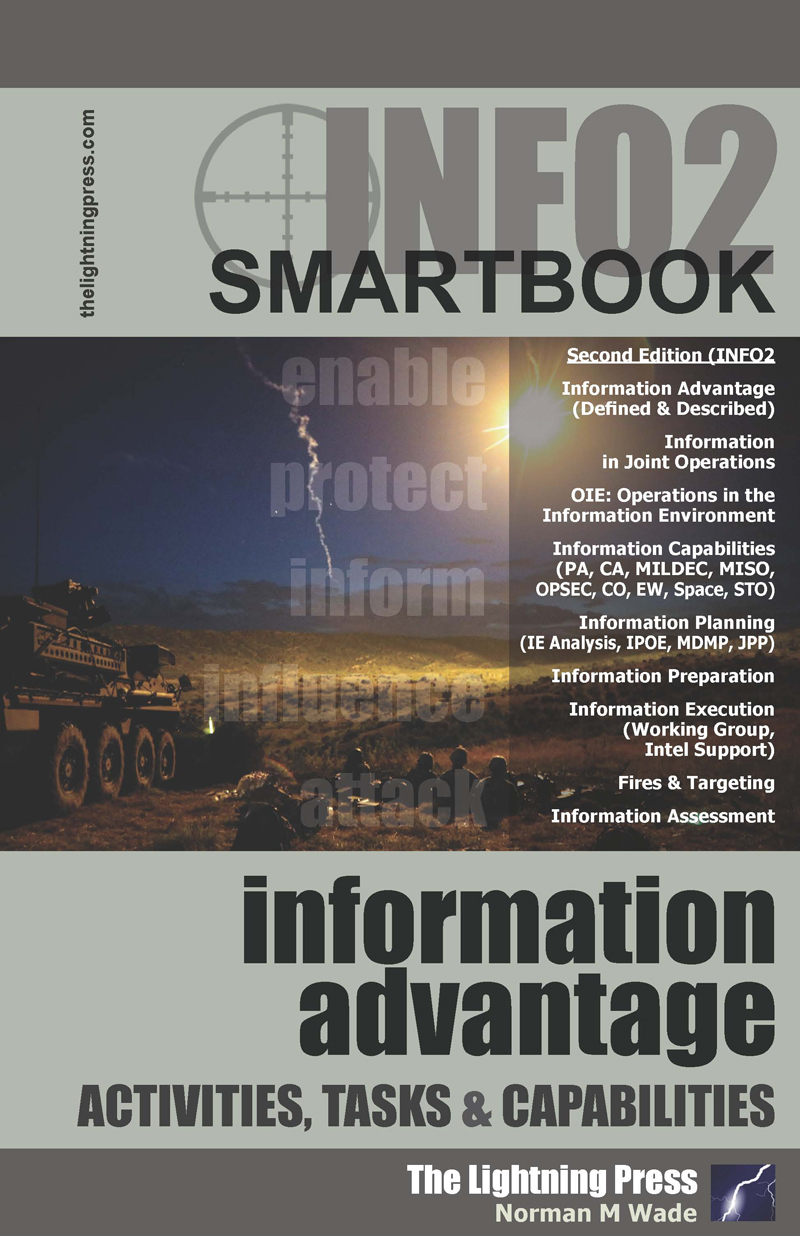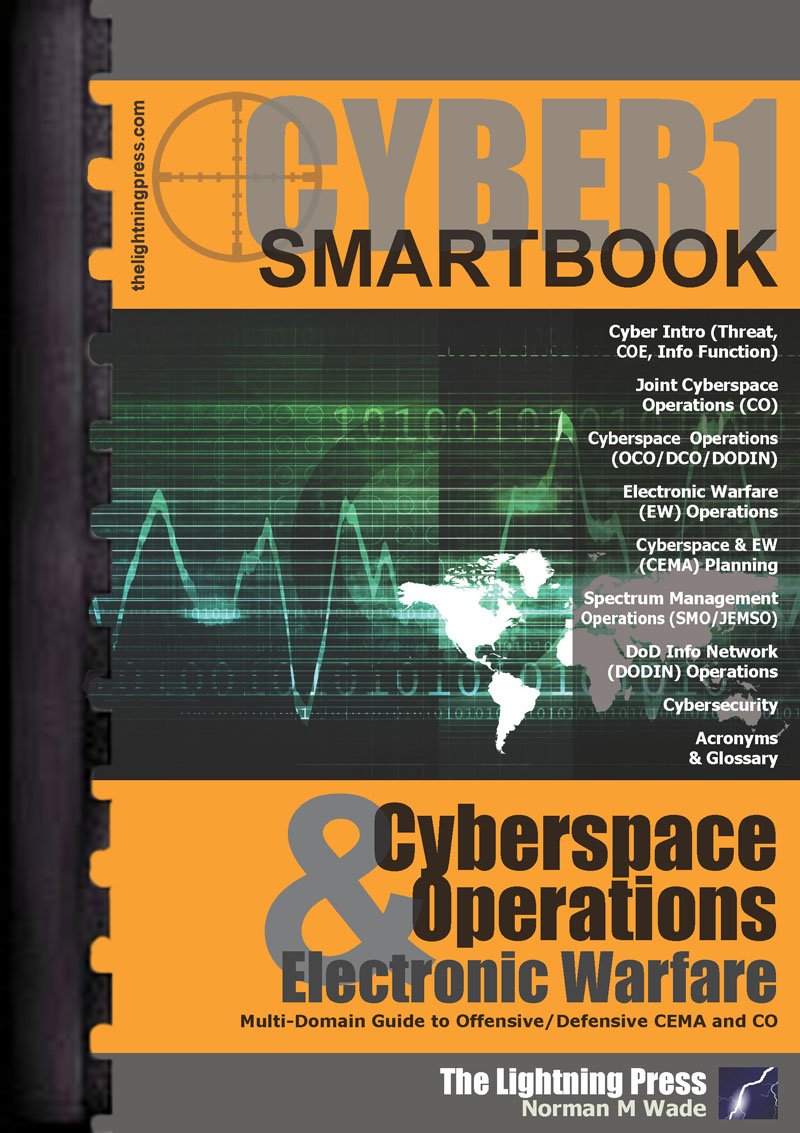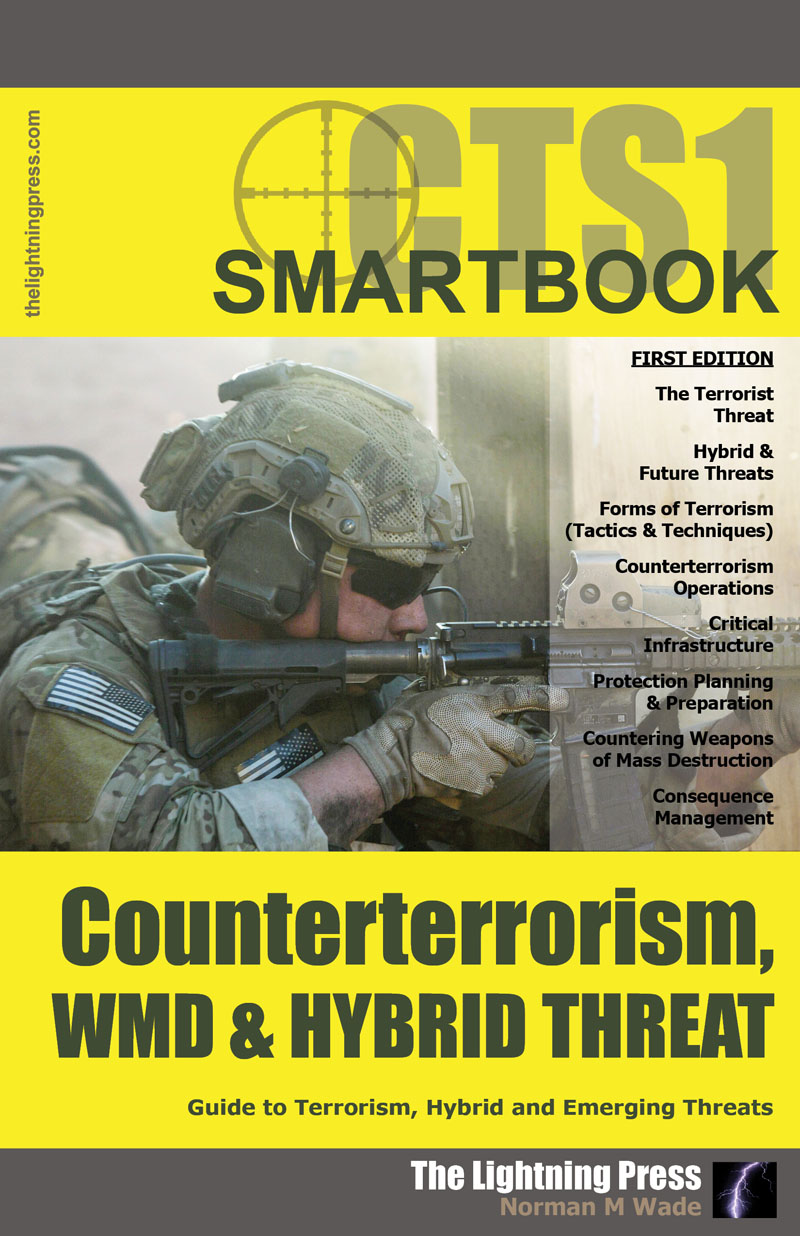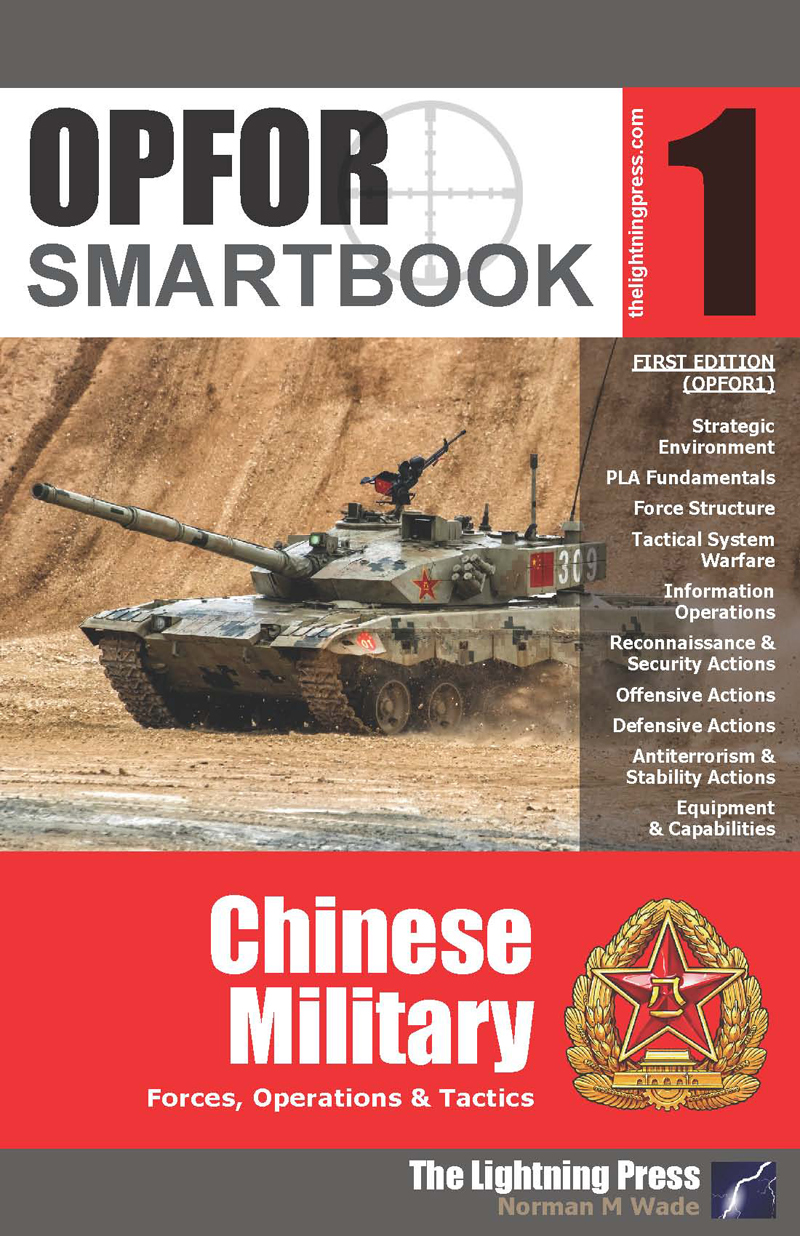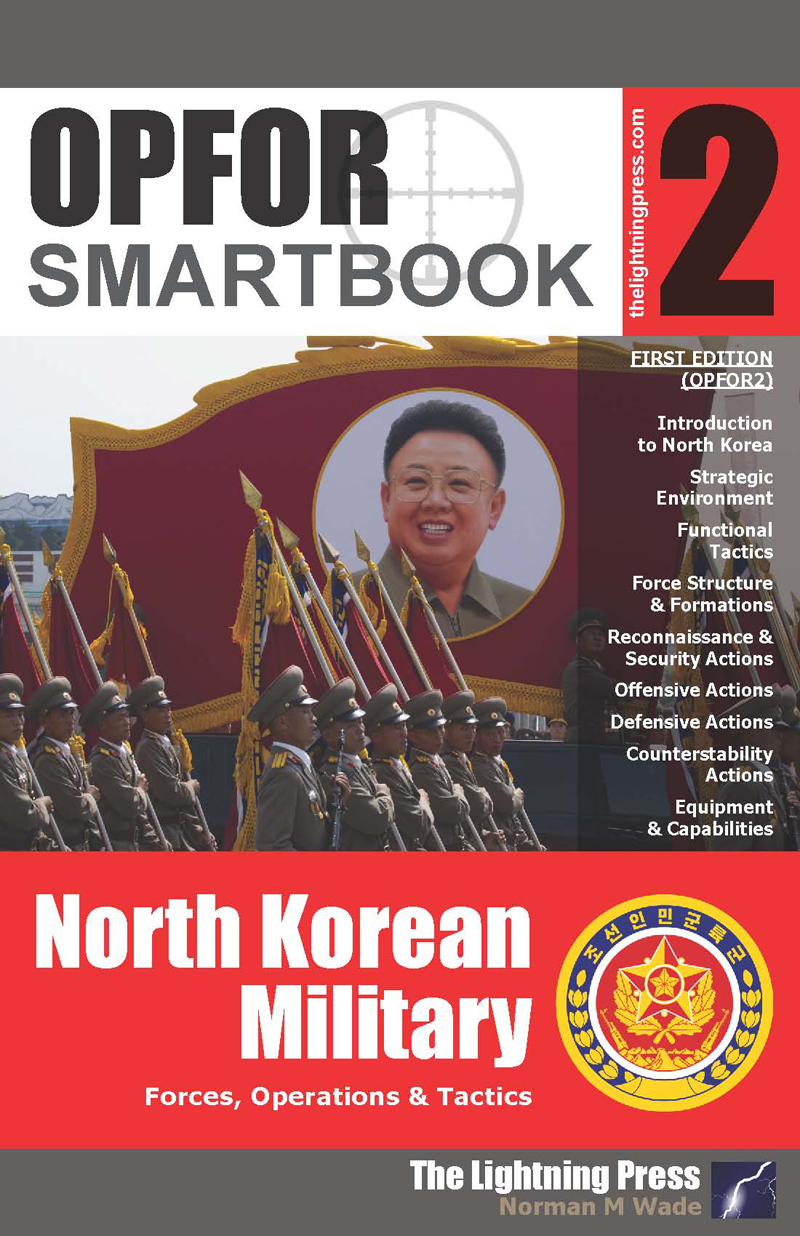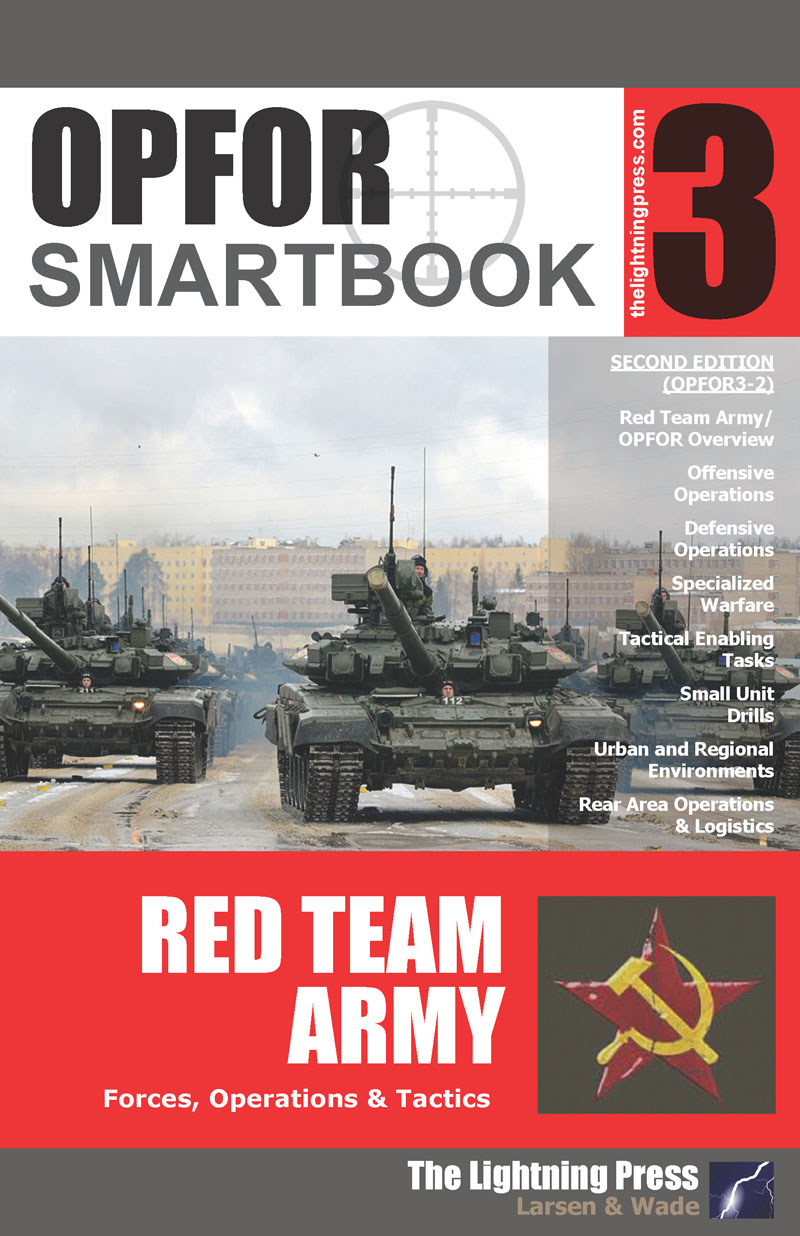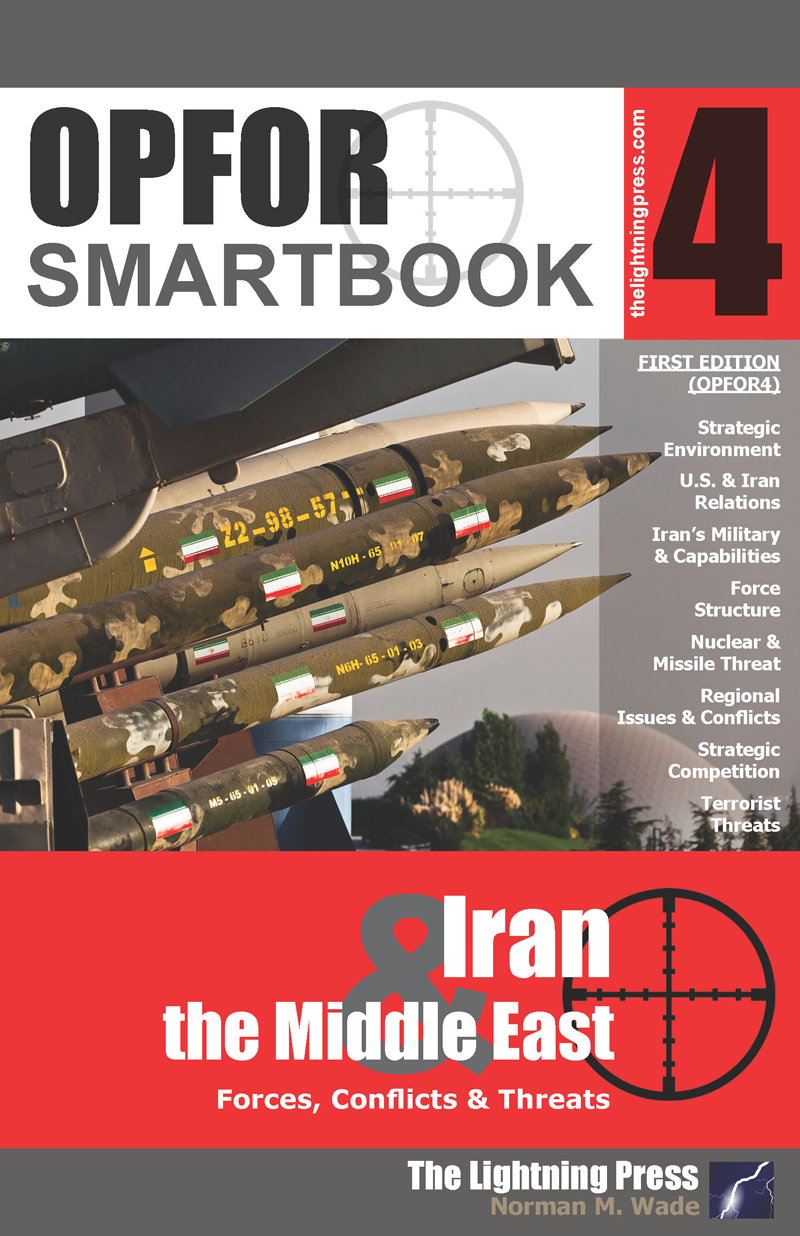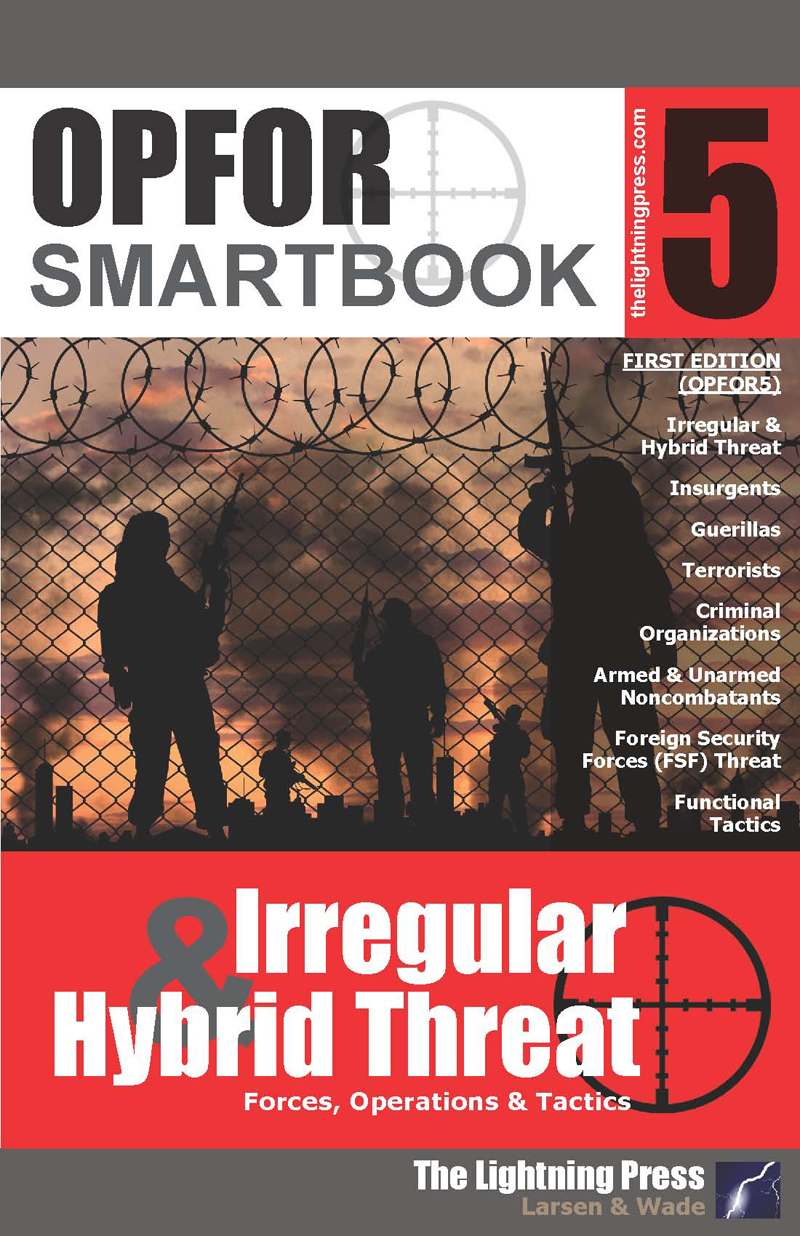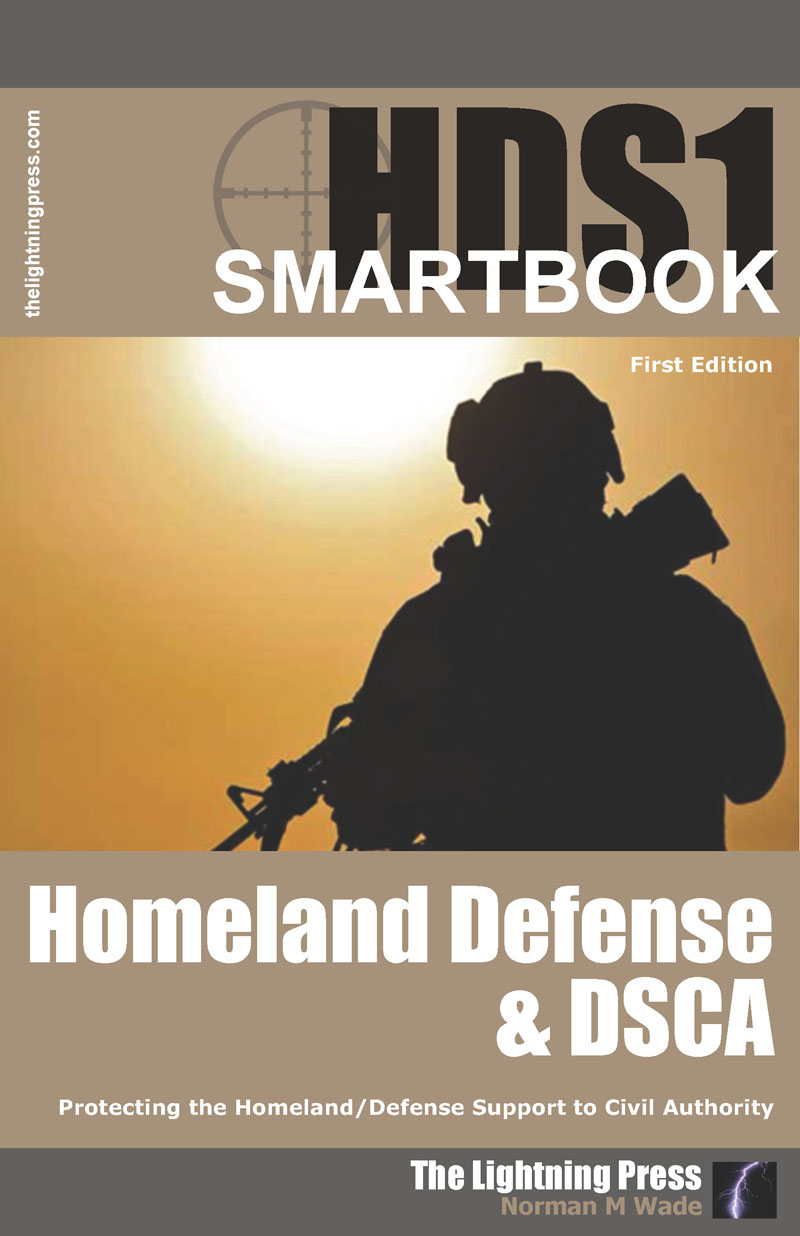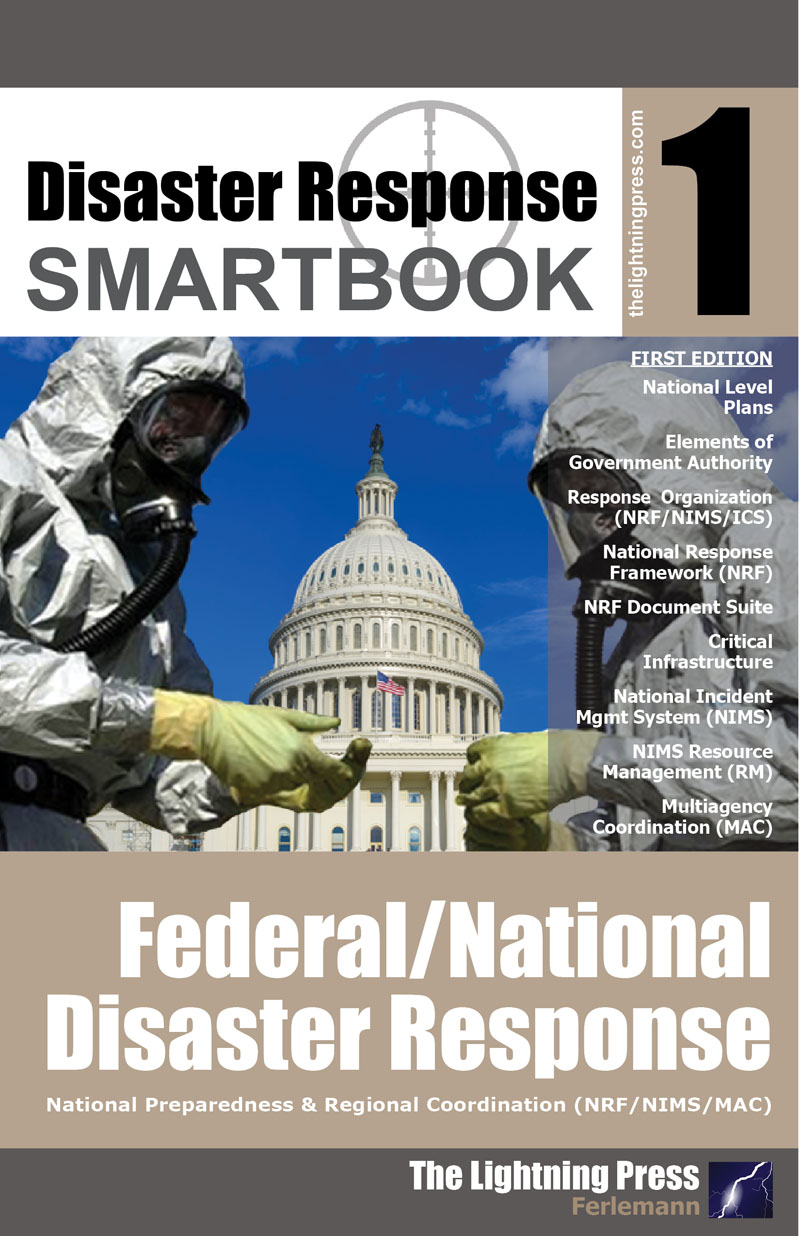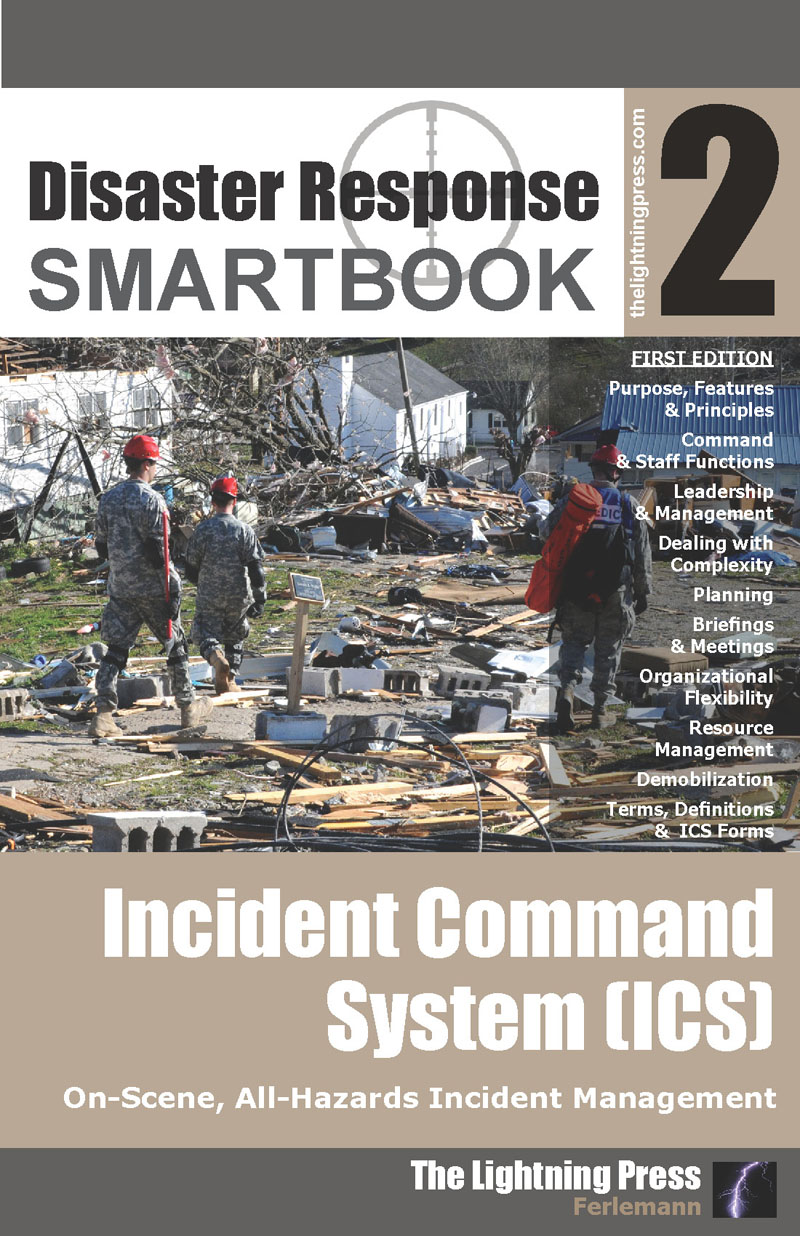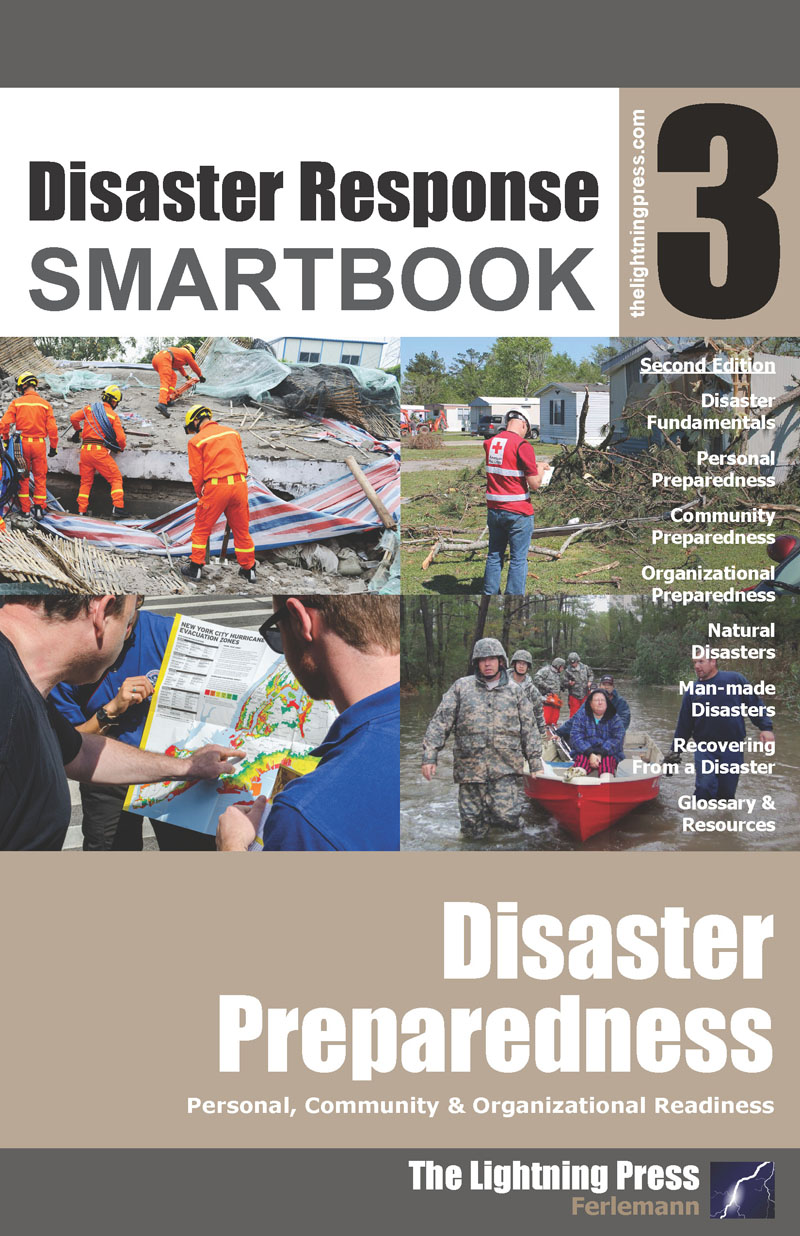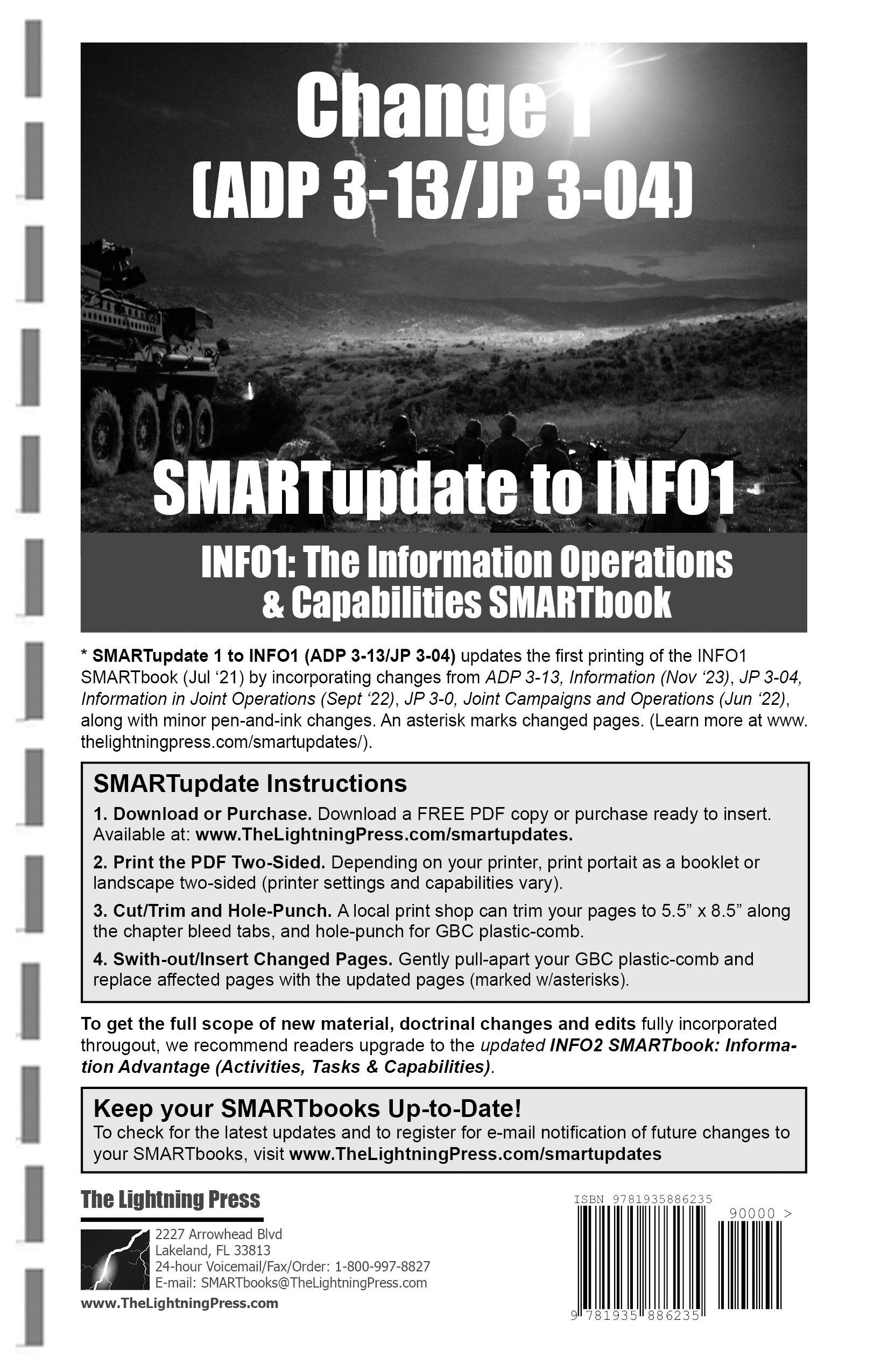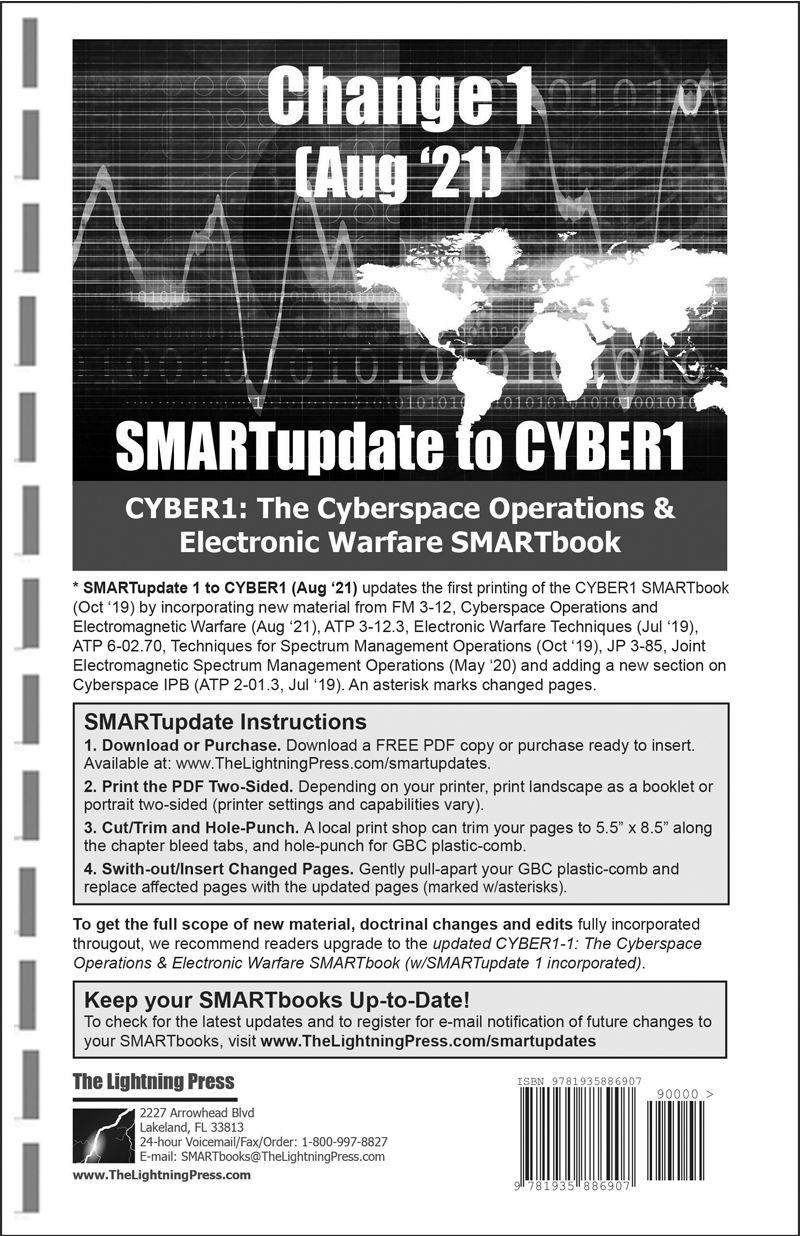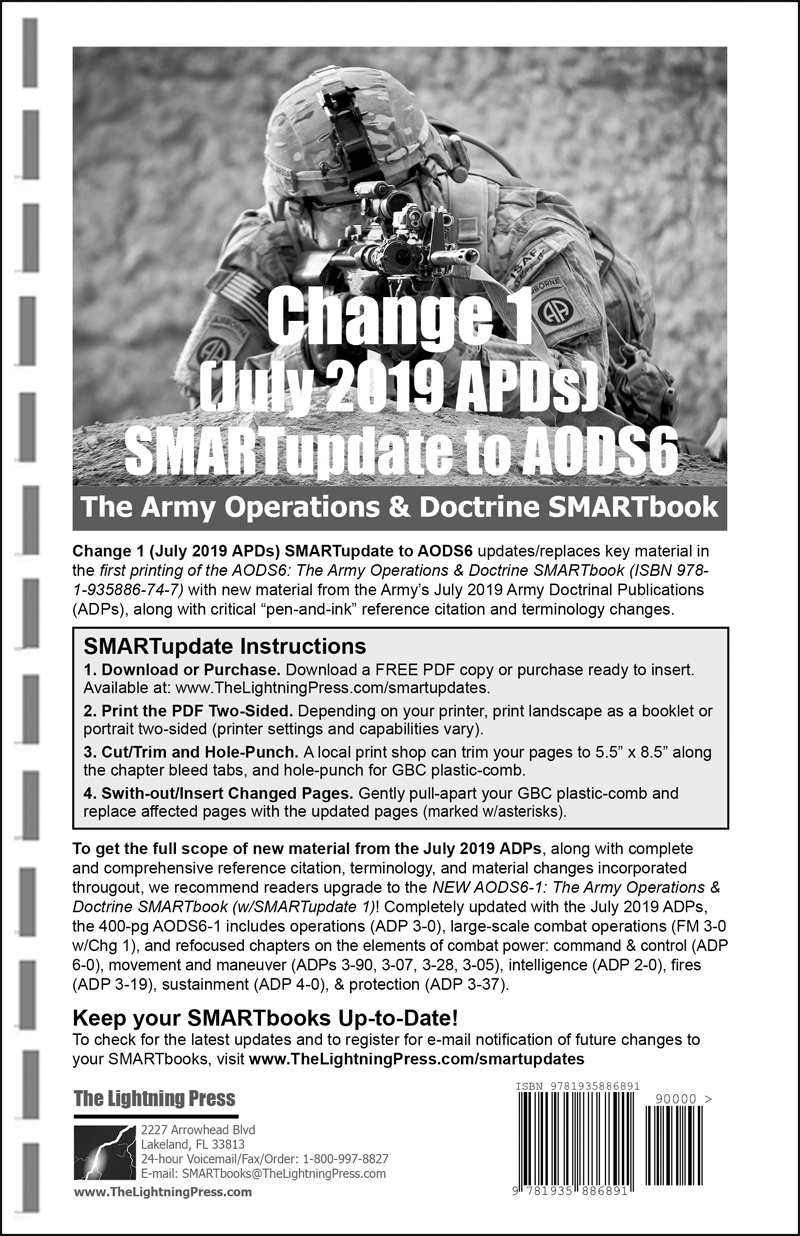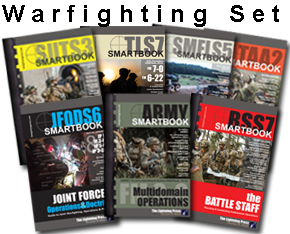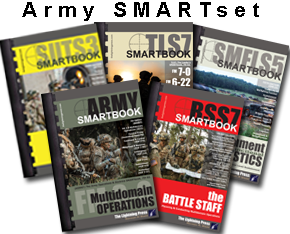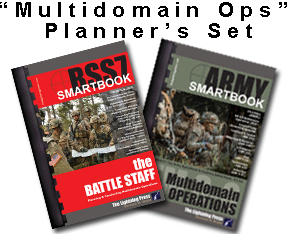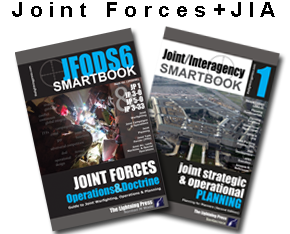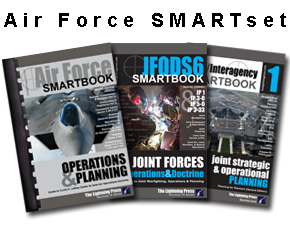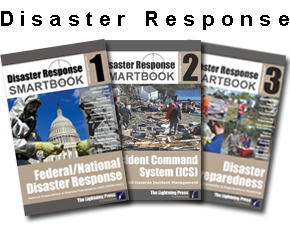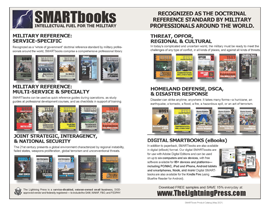AODS6-1: The Army Operations & Doctrine SMARTbook (w/SMARTupdate 1*) is the new sixth edition of our Army SMARTbook. Completely updated with the July 2019 ADPs, the 400-pg AODS6-1 includes operations (ADP 3-0), large-scale combat operations (FM 3-0 w/Chg 1), and refocused chapters on the elements of combat power: command & control (ADP 6-0), movement and maneuver (ADPs 3-90, 3-07, 3-28, 3-05), intelligence (ADP 2-0), fires (ADP 3-19), sustainment (ADP 4-0), & protection (ADP 3-37).
*SMARTupdate 1 to AODS6 (July 2019 ADPs) updates/replaces material in the first printing of the AODS6 SMARTbook with new material from the Army’s July 2019 ADPs, along with “pen-and-ink” reference citation and terminology changes. (Readers of the original/base AODS6 can obtain SMARTupdate 1 at www.thelightningpress.com/smartupdates/)
Download a free PDF sample and learn more at: AODS6-1: The Army Operations & Doctrine SMARTbook w/SMARTupdate 1 (Guide to FM/ADP 3-0 Operations & the Elements of Combat Power)
Unified land operations is the Army’s warfighting doctrine, and it is the Army’s operational concept and contribution to unified action.
Decisive action is the continuous, simultaneous execution of offensive, defensive, and stability operations or defense support of civil authority tasks. Army forces conduct decisive action. Commanders seize, retain, and exploit the initiative while synchronizing their actions to achieve the best effects possible. Operations conducted outside the United States and its territories simultaneously combine three elements of decisive action—offense, defense, and stability. Within the United States and its territories, decisive action combines elements of DSCA and, as required, offense and defense to support homeland defense.
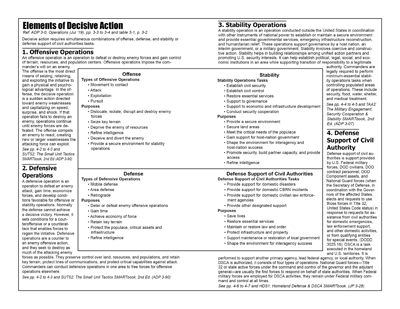
Decisive action is the continuous, simultaneous execution of offensive, defensive, and stability operations or defense support of civil authority tasks.
1. Offensive Operations
An offensive operation is an operation to defeat or destroy enemy forces and gain control of terrain, resources, and population centers. Offensive operations impose the commander’s will on an enemy. The offense is the most direct means of seizing, retaining, and exploiting the initiative to gain a physical and psychological advantage. In the offense, the decisive operation is a sudden action directed toward enemy weaknesses and capitalizing on speed, surprise, and shock. If that operation fails to destroy an enemy, operations continue until enemy forces are defeated. The offense compels an enemy to react, creating new or larger weaknesses the attacking force can exploit.
Refer to SUTS3: The Small Unit Tactics SMARTbook, 3rd Ed. for further discussion of defensive operations.
2. Defensive Operations
A defensive operation is an operation to defeat an enemy attack, gain time, economize forces, and develop conditions favorable for offensive or stability operations. Normally the defense cannot achieve a decisive victory. However, it sets conditions for a counteroffensive or a counterattack that enables forces to regain the initiative. Defensive operations are a counter to an enemy offensive action, and they seek to destroy as much of the attacking enemy forces as possible. They preserve control over land, resources, and populations, and retain key terrain, protect lines of communications, and protect critical capabilities against attack. Commanders can conduct defensive operations in one area to free forces for offensive operations elsewhere.
Refer to SUTS3: The Small Unit Tactics SMARTbook, 3rd Ed. for further discussion of defensive operations.
3. Stability Operations
A stability operation is an operation conducted outside the United States in coordination with other instruments of national power to establish or maintain a secure environment and provide essential governmental services, emergency infrastructure reconstruction, and humanitarian relief. These operations support governance by a host nation, an interim government, or a military government. Stability involves coercive and constructive action. Stability helps in building relationships among unified action partners and promoting U.S. security interests. It can help establish political, legal, social, and economic institutions in an area while supporting transition of responsibility to a legitimate authority. Commanders are legally required to perform minimum-essential stability operations tasks when controlling populated areas of operations. These include security, food, water, shelter, and medical treatment.
Refer to TAA2: The Military Engagement, Security Cooperation & Stability SMARTbook, 2nd Ed. for further discussion of stability operations.
4. Defense Support of Civil Authority (DSCA)
Defense support of civil authorities is support provided by U.S. Federal military forces, DOD civilians, DOD contract personnel, DOD Component assets, and National Guard forces (when the Secretary of Defense, in coordination with the Governors of the affected States, elects and requests to use those forces in Title 32, United States Code status) in response to requests for assistance from civil authorities for domestic emergencies, law enforcement support, and other domestic activities, or from qualifying entities for special events. (DODD 3025.18). DSCA is a task executed in the homeland and U.S. territories. It is performed to support another primary agency, lead federal agency, or local authority. When DSCA is authorized, it consists of four types of operations. National Guard forces—Title 32 or state active forces under the command and control of the governor and the adjutant general—are usually the first forces to respond on behalf of state authorities. When Federal military forces are employed for DSCA activities, they remain under Federal military command and control at all times.
Refer to HDS1: Homeland Defense & DSCA SMARTbook for further discussion of defense support of civil authority tasks.
Download a free PDF sample and learn more at: AODS6-1: The Army Operations & Doctrine SMARTbook w/SMARTupdate 1 (Guide to FM/ADP 3-0 Operations & the Elements of Combat Power)
 This article is an extract from “AODS6-1: The Army Operations & Doctrine SMARTbook, 6th Ed. w/SMARTupdate 1 (Guide to FM/ADP 3-0 Operations & the Elements of Combat Power)” by The Lightning Press. Download a free PDF sample and learn more at: AODS6-1: The Army Operations & Doctrine SMARTbook, 6th Ed. w/SMARTupdate 1 (Guide to FM/ADP 3-0 Operations & the Elements of Combat Power).
This article is an extract from “AODS6-1: The Army Operations & Doctrine SMARTbook, 6th Ed. w/SMARTupdate 1 (Guide to FM/ADP 3-0 Operations & the Elements of Combat Power)” by The Lightning Press. Download a free PDF sample and learn more at: AODS6-1: The Army Operations & Doctrine SMARTbook, 6th Ed. w/SMARTupdate 1 (Guide to FM/ADP 3-0 Operations & the Elements of Combat Power).
Browse additional military doctrine articles in our SMARTnews Blog & Resource Center.
About The Lightning Press SMARTbooks. Recognized as a “whole of government” doctrinal reference standard by military, national security and government professionals around the world, SMARTbooks comprise a comprehensive professional library. SMARTbooks can be used as quick reference guides during operations, as study guides at education and professional development courses, and as lesson plans and checklists in support of training. Browse our collection of Military Reference SMARTbooks to learn more.

